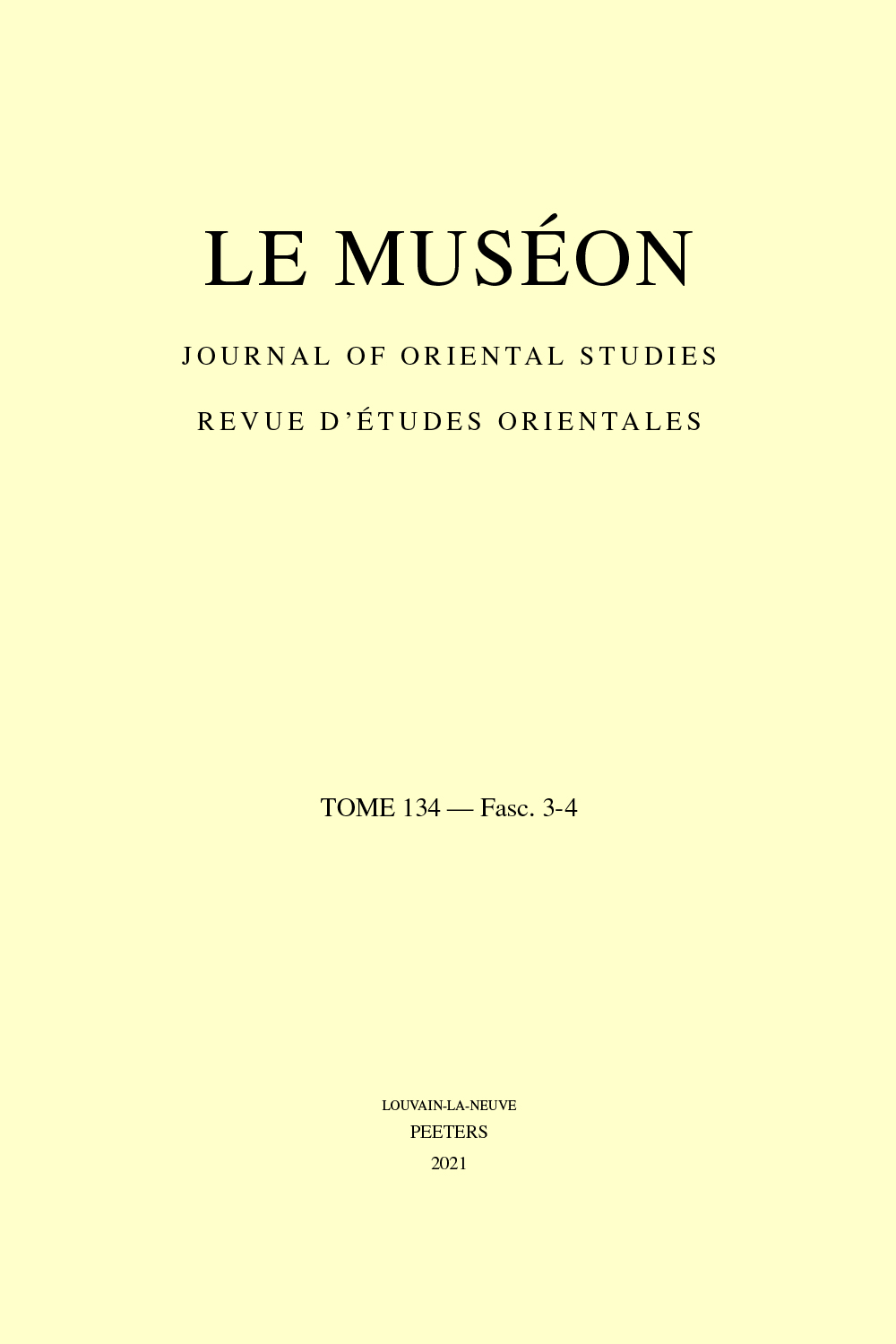 previous article in this issue previous article in this issue | next article in this issue  |

Preview first page |
Document Details : Title: Note on Armenian Վսէստակ (II Chronicles 2:10) Author(s): LUCCA, P. Journal: Le Muséon Volume: 118 Issue: 3-4 Date: 2005 Pages: 315-320 DOI: 10.2143/MUS.118.3.2004465 Abstract : This contribution reconsiders the analysis carried out by A. Perikhanyan in the periodical Annual of Armenian Linguistics 6 (1985) of the Armenian term vsestak, appearing in the first Armenian version (ARM1) of II Chronicles 2:10. Perikhanyan attributes to this word the meaning of “threshed, ground”, by conjecturing a derivation from the Iranic root *said-. According to her supposition, the analysis of vsestak and of the expression, present in the same verse, “hraman towak tal” would somehow establish a relationship of textual dependence between this verse and the corresponding one in the Syriac version. On the contrary, from a comparative analysis results that, supposing the term had such a meaning, ARM1 would present a textual pattern, which could neither be explained on the basis of the Syriac text nor could it be referred to the Greek or to the Aramaic version. Consequently, ARM1 would present an isolated, unique reading, if compared with the other versions and its meaning could only be referred to an undemonstrated textual-exegetic tradition of the Hebrew unvocalized text. The author’s proposal is therefore to consider vsestak as a copying error from a previous text, presenting the word vastak. This mistake could be due to the close similarity between the two letters < a > and < s > in the Armenian alphabet. Even though this hypothesis does not give any precise clue about the ARM1 Vorlage, it allows to assign a textual form common to the one displayed by the other versions to the reading of the Armenian text. |
|


